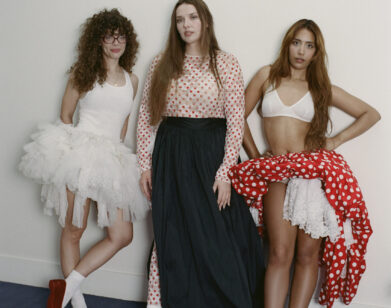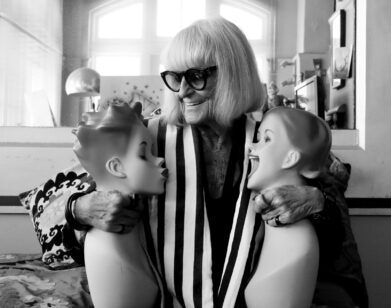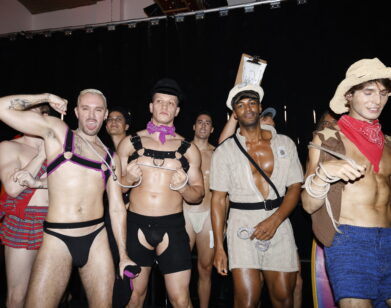Vision
Leather Daddy Peter Marino on Pop Art and Garbage Architecture
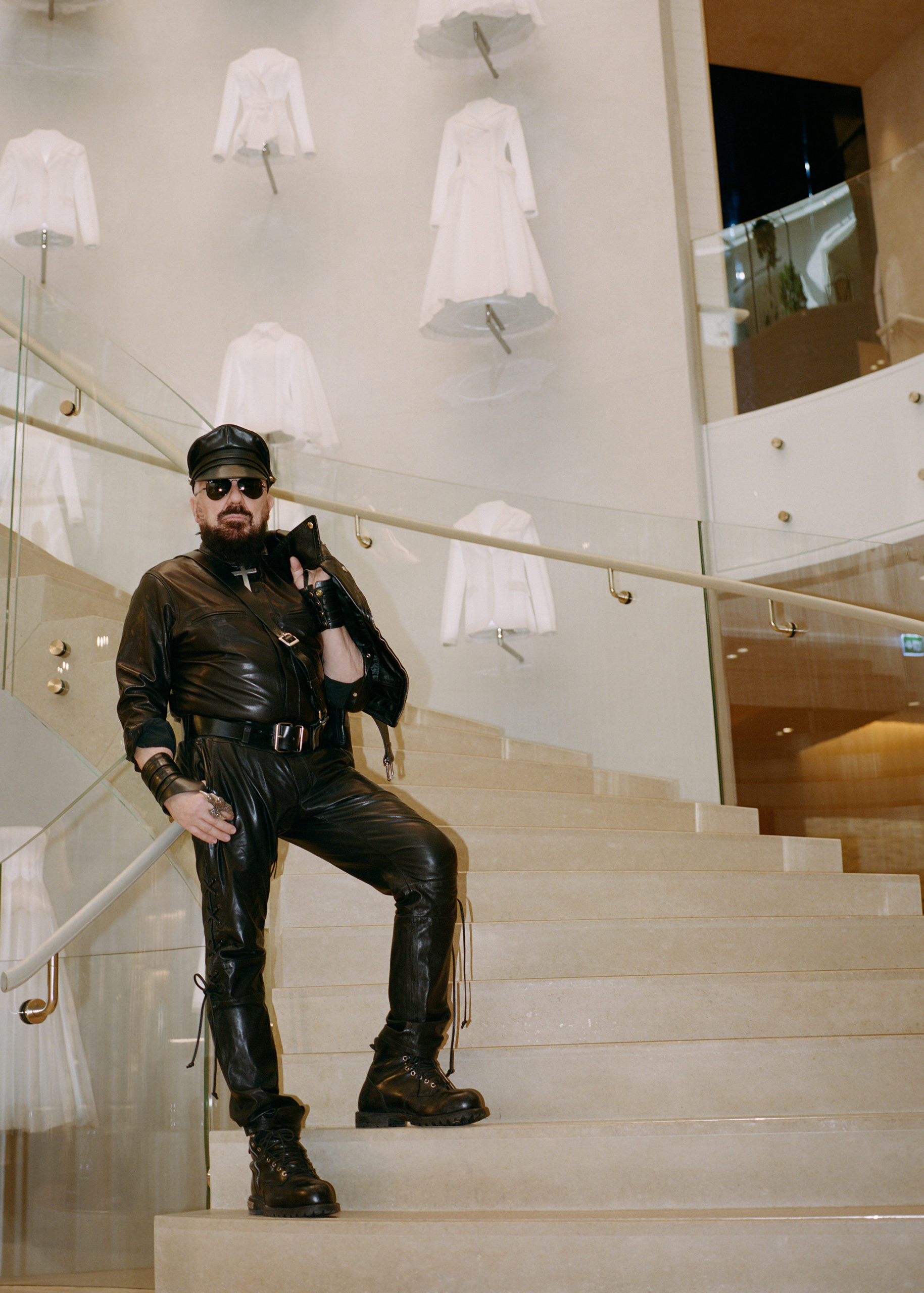
Peter Marino is known for constructing some of the most iconic storefronts across the globe, but the 72-year-old architect’s tastes venture beyond high fashion houses and custom leather. Marino is an avid collector of everything from cookie jars to contemporary art—a practice that positions him as both a historian of consumerism and an advocate for conservation across all his endeavors. Nowhere is this more obvious than in his latest feat, the stunning reimagining of Dior’s historic Avenue Montaigne flagship store in Paris. Built in 1865, the hôtel particulier has been anointed with the Marino touch, and boasts artworks from legends such as Isa Genzken, as well as several living gardens designed with the late, great Monsieur Dior in mind. Imagined as a “kind of theater in which many different plays could unfold,” the luxury storefront pays tribute to the house’s past, while becoming a contemporary museum of its own. To learn more about Marino’s legacy, his friend, the conceptual artist Rashid Johnson, called him up to discuss Andy Warhol, architecture, and American icons.
———
PETER MARINO: Where are you? How do I know I’m talking to the real Rashid?
RASHID JOHNSON: You probably won’t know. You’re just going to have to wing it and see how it goes. I’m in Brooklyn at my new studio.
MARINO: How is that?
JOHNSON: It’s good. I ended up spending a ton of money building it out.
MARINO: Oh, fuck. Alright. Let’s do this interview thing.
JOHNSON: I’m going to take us back to 1978. What made you start your company?
MARINO: I got lucky when Andy Warhol bought his townhouse on East 66th Street. He said, “Peter, do you want to do it?” I said to myself, it’s now or never. The ’70s were pretty rough. There was a huge oil crisis in the Middle East, and architecture firms were devastated. They were laying everybody off. It was a bad time economically. I opened my business with Warhol as my first client, and I was like, “If I don’t make it, I’m going to leave architecture.” I got a business permit from the city of New York and opened my studio, which meant I put one drafting board on my dining table and the other over my bathtub and toilet—lived in a studio.
JOHNSON: Was it an actual business? Were you incorporated?
MARINO: Not until ten years later. It was the old freelance routine. But luckily, after designing Andy’s house, Fred Hughes bought his old one on Lexington Ave. and that became my second job. The reason Andy moved was that his mom had died and it creeped him out. She lived with him there for 20 years. When he moved into the posh new East 66th Street house, he was morbidly private.
JOHNSON: Reclusive.
MARINO: Yeah. Designing his house didn’t do me any good because nobody saw it. But it was Fred Hughes’s job to get portrait commissions for Andy, so he entertained the world. He hosted everyone from the Agnellis, to the Rothschilds, to Pierre Bergé and Saint Laurent. All those people became clients because of him.
JOHNSON: Right.
MARINO: When I finished the Warhol job, there were extras on the contract that Andy felt he shouldn’t pay. It was embarrassing, because I had used a contractor that was recommended to me by Philip Johnson, and he got really annoyed with Warhol. Of course Andy did his typical, “Well, if you buy a painting, I’ll be able to pay.” I’m giving you a couple of tips, Rashid, on what to do here.
JOHNSON: This is good strategically. I like this.
MARINO: So Philip Johnson bought four of Warhol’s portraits of his mother, and he was like, “Before I sign the check, Andy, I want to see that you’re paying the contractor.” And so he paid, and all’s well that ends well. Philip was so nice because he offered me a job. His office was so impressive. I couldn’t imagine an architect having enough money for offices in the Seagram building. It was just obscene.
JOHNSON: This was in the late ’70s? Was he doing lunch at the Four Seasons every day?
MARINO: Yep. Every single day. He wanted me to join the firm as a baby partner. I said, “Philip, I’m on my own, dude.” I was lucky enough to work for Skidmore, Owings & Merrill [SOM], George Nelson, and I.M. Pei—I tease people by saying I got hired not because I had any talent, but because I spoke French.
JOHNSON: And they needed somebody who could translate?
MARINO: Yes. They were doing a very large project. The Tour du Crédit Lyonnais [renamed Tour Part-Dieu]. They were looking for architects who could speak French and actually produce drawings in French.
JOHNSON: That’s amazing. Were any of those firms deeply influential? Or were they a means to an end?
MARINO: SOM was influential in that I learned how an architect’s office needs to be professionally organized. Sometimes when you just work with little firms, you don’t know what the F you’re doing. In SOM, they had three floors and three departments: one floor of architects, one floor for interior architects, and one floor of administration, which is exactly how my office is run today. They don’t teach you how to run an architecture company in college. They say, “Only one out of 100 of you is going to be successful anyway, so why should we bother telling you how to run a company?”
JOHNSON: That’s reminiscent of my art school experience.
MARINO: I think that’s the prejudice of art and architecture teachers, who tend to be architects and artists who haven’t made it in a business sense. Then I went to George Nelson [Associates] and got into theory. His lectures at Harvard were very mind-bending. I loved George Nelson because we did all the furniture for Herman Miller, all the chairs we sit in today. It was totally influential because he got me out of that stupid prejudice that Cornell had embedded in me. In architecture, if you want to design a chair or a desk, they look at you like, “Well, if you want to go that way…”
JOHNSON: That’s lowbrow.
MARINO: It’s snobbism. It’s ridiculous. At Harvard they were like, “You may have gone to architecture school, but it’s bigger than just architecture. It’s about design.” So today, I do buildings, I do interiors. I design pens, vases, chairs. The value of design is what George Nelson taught me and that’s incredible.
JOHNSON: And that’s really a signature of how you function today. Were you interested in art before your relationship with Warhol?
MARINO: One hundred percent. I played piano until I was 14 and then, in a real drama queen moment, slammed the keyboard down and said to my parents, no. I’m not a pianist. I’m an artist. In high school, I was in special art classes. And funnily enough, when I graduated at 16, which was two years too young, I got this giant art medal from the then-mayor, John Lindsay. At that point I was taking plywood, burning it, throwing tar on it, and then sticking black-and-white photos of cats and naked men all over it into the tar.
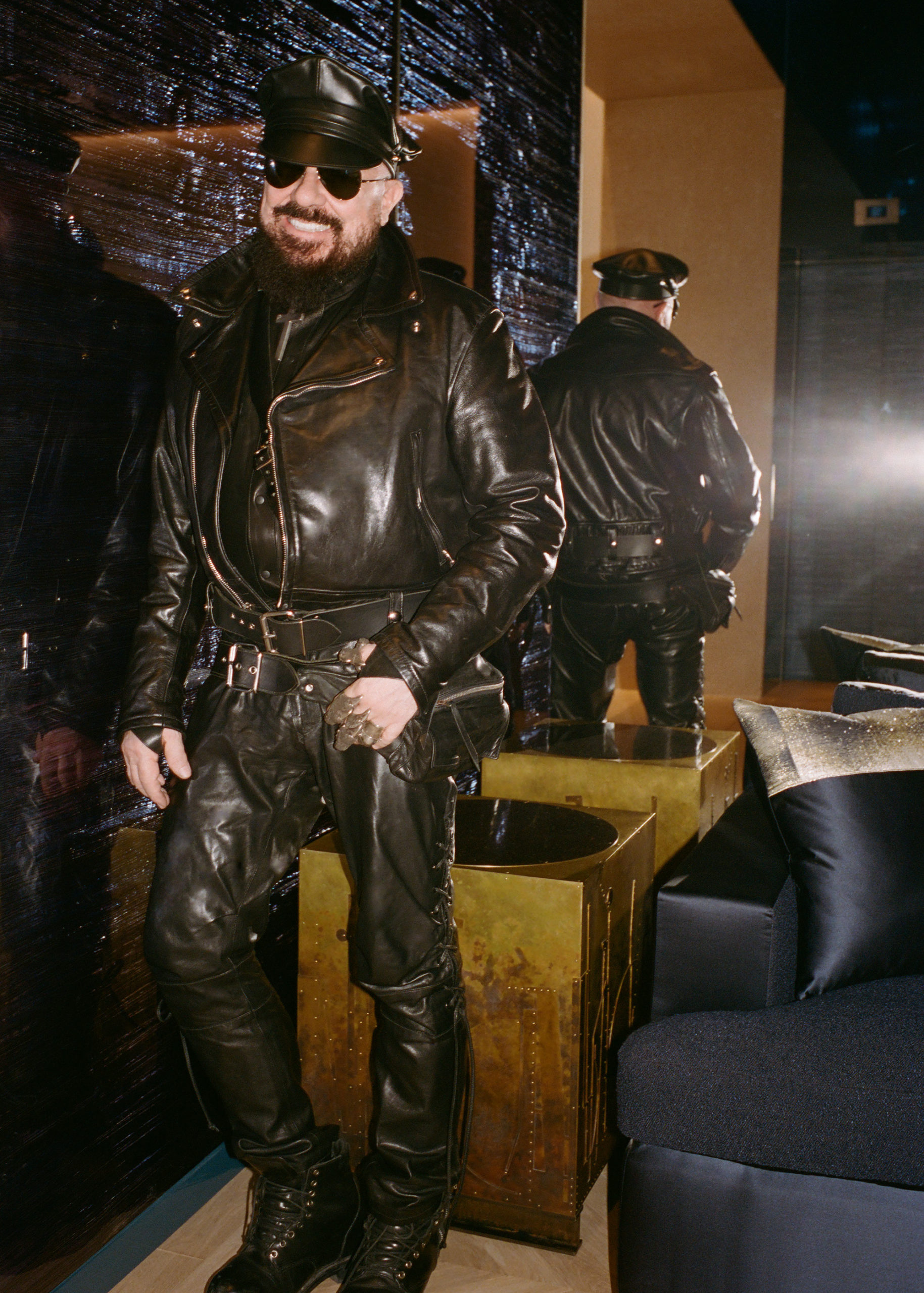
JOHNSON: [Laughs] That sounds great.
MARINO: The series was very, very, very cool. My art portfolio was what got me into Cornell, not my grades. I was thoroughly intending to be a fine artist, but then in college, when I saw Andy’s pictures of cars and ketchup and Coca-Cola, it dawned on me that I didn’t have the innovativeness that was happening in the pop art movement. I looked at my work and went, “This is not the future. I don’t want to be a B-level artist. I’m not going to be a great architect, but I’m going to settle for being a good architect.” It was interesting because then, in the ’60s and ’70s, architecture was at a real low point.
JOHNSON: What do you feel caused that? Some ambition towards futurism?
MARINO: I don’t know what caused it, but all the shit buildings in New York were done in the ’60s, like those white brick residences. I should write a book and call it The Decade of Garbage Architecture. It was just a mess. You would be trained in the Beaux-Arts style up until 1945, but you were expected to produce Corbusier. Then after the war, all the colleges pooh-poohed Beaux-Arts training and it was just a time of nihilism. There was no direction in architecture.
JOHNSON: You were talking about pop and how experimental and complicated it is. How did pop inform your work, or architecture in general?
MARINO: Unfortunately, pop got subsumed by Michael Graves and post-modernism and cartoon architecture. Warhol’s paintings were nailing America. He was like, “You fucking consumer society. You know who your gods are? Coca-Cola, Heinz ketchup, Marilyn Monroe, a dollar bill, and Elvis Presley.” But pop architecture didn’t define America. It was a small mannerist movement trying out pop forms and pop colors. I think some of Graves’s work is very good, but as an architectural movement, it’s very mannerist. It’s one person’s interpretation. Pop art shaded him, and I was always a bit terrified of the postmodern movement. I thought Venturi, Scott Brown [and Associates] did good work, but I think it’s fair to describe it as a niche section in the field.
JOHNSON: One thing that is interesting for me, having gotten to not only be in your public spaces, but also your private spaces, is thinking about you as a collector. You have the bug. Whether it’s the way that you collect plants in your garden, or your ceramics collection, all the way to your relationship with contemporary art. Where does the collecting come from and what does it mean for you?
MARINO: My collecting started by going to the 26th Street and Sixth Avenue flea markets on weekends with Warhol when I was about 20 years old. I would watch Andy bargaining with people for cookie jars. Andy said, “I have two of these. Peter, you should get one.” It started on a very small scale, but you’ve been in my kitchen; I now have over 160 cookie jars. I have a slightly obsessive compulsive nature. If I collect something, I usually collect it in depth. I’m working on my fifth or sixth Rashid Johnson. I’d like to have a few hundred.
JOHNSON: [Laughs]
MARINO: The reason I collect, and the reason Andy collected, is that within objects, within paintings, within sculpture, and within gardens, comes inspiration. He used to say to me, “This made families happier, having Fig Newtons in their Porky Pig cookie jar.” These objects ease depression, and they teach you things. This is the understatement of the year, but I am not a minimalist.
JOHNSON: You are not a minimalist, my friend. It’s unlikely that you’re going to be mistaken for one. I was really excited to see the breadth of your collecting when I started spending more time with you. From your wall treatments to your architectural gestures, I can see the influences from things you collect.
MARINO: It’s like the Dior Avenue Montaigne project that I recently did in Paris. People say to me, “Where’d you get the idea to stick three gardens in a handbag boutique?” But you know me, you’re like, “Yeah, this is Peter’s work. He put a garden for men, a garden for women, a garden on the roof. He put in tons of different seating areas. He’s put in all sorts of paintings, sculptures, and hundreds of different finishes.”
INTERVIEW: That was a major project for you. Can you tell us a little more about the Paris flagship, and how you’ve updated it?
MARINO: Avenue Montaigne was the first Christian Dior boutique. It still has its historical 18th-century façade, but now we’ve tripled the space so it’s a three-level store instead of a one-floor boutique. Plus, we added men’s and women’s sections, three gardens, a restaurant, a hotel suite, and much, much more. I wanted the space to be surrounded by flowers and feel joyful, especially after COVID.
INTERVIEW: Is it a totally new construction?
MARINO: The only thing we had to keep were the exterior walls, because the building is a registered monument, as well as the stairs, but everything else inside was modified. The original boutique influenced me a lot, and I wanted to include all the icons that Monsieur Dior loved. For instance, if you look in the women’s shoe department, I made a corner with dix-huitième siècle paneling. It’s both a new beginning for the House and a way for it to boast its maturity.
INTERVIEW: So the boutique is, in some ways, a celebration of art de vivre [the French art of living]?
MARINO: Absolutely. It’s a celebration of the artisans of France. I’m always very impressed by the culture of artisans in France—they create as much as they can using their hands, like me. We have so many people involved: the furniture makers, the woodworkers, and many artists have been employed throughout the years to do special finishes. Even the textiles in the men’s department are painted by hand.
INTERVIEW: It’s a beautiful space.
JOHNSON: Speaking of Dior and all of the work that you’ve done with them, why do you think you’ve been so grandly embraced by so many of these high-end brands?
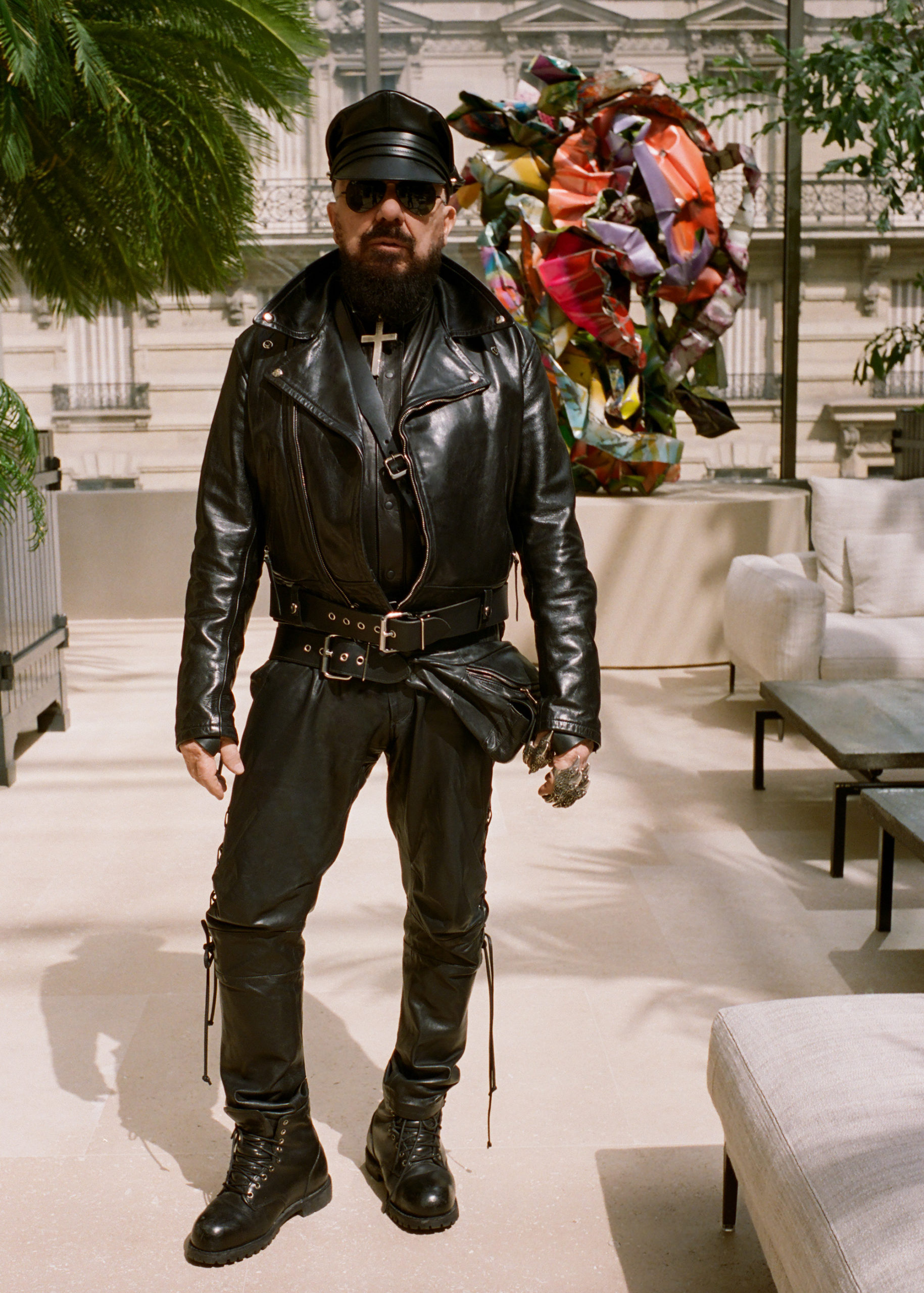
Art: “Mysting Tonatta,” 1990, John Chamberlain.
MARINO: They like guys who wear leather. [Laughs] It started very fortunately with Barneys in the mid-’80s because of the Warhol, Fred Hughes connection. I had a meteoric rise because then I was hired by Yves Saint Laurent to do his apartment in New York. To be hired by the Rothschilds in England to do Ascott House, these were big things for a kid from nowhere. Then, when the Agnelli family picked me up, that was a golden wand saying, this kid is the one you have to look at. After all that stuff came out, I got the call from Fred Pressman down at Barneys. I said, “Look, Fred. I can save you a lot of time. I have zero retail experience.” At that time there were very specific firms that only did stores—it’s the reason they all looked the same. So Fred, who was really ahead of his time, said, “No, no, no. I don’t need anybody who knows anything about retail. I know everything there is to know about retail. I need somebody with talent.”
JOHNSON: I can appreciate that.
MARINO: And so I said, “Okay, then I’m your man.” I went for the interview and we hit it off. He kept saying, “You can’t just sell suits anymore. Now you have to diversify.” And so my first retail experience was designing a six-foot-long counter to sell chocolates.
JOHNSON: Wow.
MARINO: That led to my doing the women’s store. I had to interview every designer that they were putting in the new store; that’s how I picked up clients.
JOHNSON: It’s really fascinating how your brand interventions are all really autonomous. They each have their own spirit. I don’t know how you are able to keep it all straight.
MARINO: I imagine each brand is like a different residential client. No two homes that I’ve ever done in 40 years look alike, and it’s because the client gives you so much input. I pretend I’m working for Christian Dior or Coco Chanel. I have this whole imaginary conversation with them.
JOHNSON: This leads into my last question. With all of the diversity in your projects—materially, critically, and obviously in your clientele—there’s one space in which you have a tremendous amount of consistency and that’s in how you dress. How does that reflect who you are, to have this one singular look and philosophy of fashion?
MARINO: Remember my wife, Jane, is a costume designer. She designed the costumes for Beverly Hills, 90210. I’ll always remember her saying, “If I see one more architect in khaki trousers with a blue blazer, I’m going to faint.” People ask, “How’d you get into leather?” Twenty-five or 30 years ago, I rode my motorbike in from Southampton and I had my leather jacket, leather chaps, and motorcycle boots on. I live around the corner, so I normally go home to change and then come into the office, but I didn’t have time so I walked into this interview in leather and the girl from Women’s Wear Daily went, “Holy shit. Do you always look like that?” And I said, “No, but from now on…”
JOHNSON: When you find something that works…
MARINO: I remember talking to Jane about it that night. She was like, “Go with it, honey.” It’s easy, it’s fun, and I like designing my own clothes. When you work with as many brands as I do, you have to be careful.
JOHNSON: You have to have your own looks so that you don’t piss anybody off, right?
MARINO: I wear Red Wing motorcycle boots so nobody gets offended. All’s well that ends well.
———
Production: Today Mgmt
Photography Assistant: Axel Aurejac

